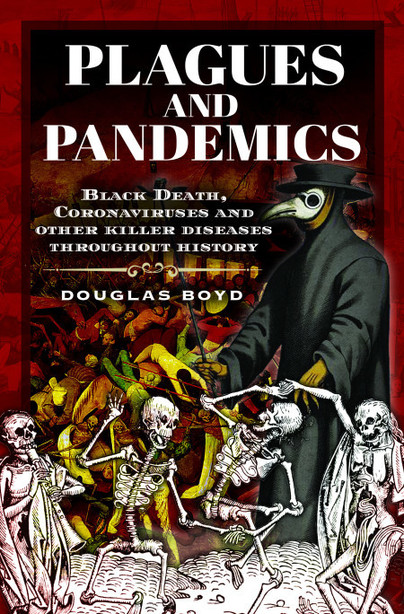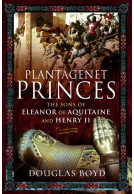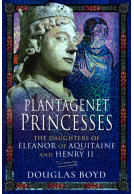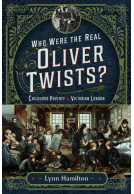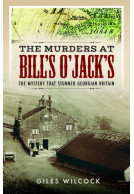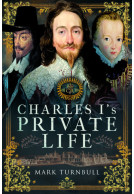Plagues and Pandemics (eBook)
Black Death, Coronaviruses and Other Killer Diseases Throughout History
Imprint: Pen & Sword History
File Size: 13.4 MB (.epub)
Pages: 216
ISBN: 9781399005197
Published: 10th December 2021
| Other formats available - Buy the Hardback and get the eBook for £1.99! | Price |
|---|---|
| Plagues and Pandemics Hardback Add to Basket | £20.00 |
All you need for a plague to go pandemic are population clusters and travellers spreading the bacterial or viral pathogens. Many prehistoric civilisations died fast, leaving cities undamaged to mystify archeologists. Plague in Athens killed 30% of the population 430-426 BCE. When Roman Emperor Justinian I caught bubonic plague in 541 CE, contemporary historian Procopius described his symptoms: fever, delirium and buboes – large black swellings of the lymphatic glands in the groin, under the arms and behind the ears. That bubonic plague killed 25 million people around the Mediterranean. Later dubbed Black Death, it killed 50 million people 1346-1353, returning to London 40 times in the next 300 years. The third bubonic plague pandemic started 1894 in China, claiming 15 million lives, largely in Asia, before dying down in the 1950s after visiting San Francisco and New York. But it also hit Madagascar in 2014, and the Congo and Peru. The cause, yersinia pestis was identified in 1894. Infected fleas from rats on merchant ships were blamed for spreading it, but Porton Down scientists have a worrying explanation why the plague spread so fast.
Any disease can go epidemic. Everyday European infections brought to the Americas by Cortes’ conquistadores killed millions of the natives, whose posthumous revenge was the syphilis the Spaniards brought back to Europe. The mis-named Spanish ’flu, brought from Kansas to Europe by US troops in 1918 caused more than 50 million deaths. Fifty years later, H3N2 ’flu from Hong Kong killed more than a million people.
One coronavirus produces the common cold, for which neither vaccine nor cure has been found, despite the loss of millions of working days each year. That other coronavirus, Covid-19 was NOT the worst pandemic. Chillingly, historian Douglas Boyd lists many other sub-microscopic killers still waiting for tourism and trade to bring them to us.
I wanted to read this book as considering the last few years we have had, I thought it would be interesting to read more about other pandemics we have had in history. As well as learn about ones that could come in the future.
For the Love of Books
This book goes into depth about how they are created and have been eradicated. I found the book an interesting read, learning about ancient plagues as well as more information about historical events that I already knew a little about.
I would definitely recommend this book for people who are interested in pandemics and plagues of history, as well as the ones of today.
As we navigate the craziness of Covid, it is nice to know that we are not alone in history. There have been numerous plagues and pandemics throughout, and here, the author breaks them down nicely.
NetGalley, Rebecca Hill
If you are looking for something that gives a little more information on these pestilences, give those who are not familiar with an introduction to sicknesses through history.
Interesting and engaging - I enjoyed this book.
Perhaps you will have had enough of pandemics by now, or maybe you would like to know more about these in the past and the lessons we should have learnt but sadly have not. All you need for a plague to go pandemic are population clusters and travellers spreading the bacterial or viral pathogens.
Bradway Bugle - Spring 2022
History is littered with records of plagues and pandemics, while others are evidenced by the sudden collapse or decline in civilisations as discovered by archaeologists. Roman Emperor Justinian I caught bubonic plague in 541 CE, which killed 25 million people. Later dubbed Black Death, it killed 50 million people 1346-1353.Any disease can go epidemic.
Everyday European infections brought to the Americas by Cortes’ conquistadores killed millions of the natives, whose posthumous revenge was the syphilis the Spaniards brought back to Europe. Chillingly, historian and author Douglas Boyd lists many other sub-microscopic killers still waiting for tourism and trade to bring them to us.
This book is a well written quick read. It has a lot of information on the plagues from the past in a easy to read way.
NetGalley, Naomi Downing
Rating: 5 out of 5 stars
NetGalley, Melanie Dolhun
We are living in unprecedented times! Or are we? Douglas Boyd's book illustrates that the current pandemic is just one in a series of many over the last few thousand years, and takes the reader on a thoroughly fascinating and very readable account of the many plagues and pandemics that have occurred worldwide from ancient times to the present day.
This book is both intriguing and disgusting. I became fascinated with the telling of the pandemic and plagues through out history. You can read about plagues and pandemics from the black plague to current day COVID crisis. I thought this book was very well written, covering some of our darkest history.
NetGalley, Annalisa Alberti
A quick, informative guide to plagues and pandemics throughout history. I found this well organized with just enough information to give you the details but not too much to bog readers down with overly complicated explanations. It's a good starting off point for those who want to learn more about the different plagues with first-hand accounts sprinkled in for good measure. Lots and lots of facts and a great list of books for future reading.
NetGalley, Maria Doktor
Rating: 5 out of 5 stars
NetGalley, Susan Johnston
Am I a glutton for punishment reading this book as we careen into our third winter of COVID? Maybe a little but I find dealing with the current situation is often improved by understanding the history of such things. And this book does a bang up job taking the reader through pandemics and plagues from the earliest stages of mankind right up to the present. COVID is not unique. It is not the last pandemic either. As the book points out there are microbes hidden away that we have yet to discover that could bring about something far worse. But instead of filling me with dread, it helps to realize we have passed this way before and we shall pass this way again.
It proves that while mankind has made remarkable strides in curing and preventing diseases, Nature will find a way. Often the sources of these pandemics are repeated again and again. Frequently it is our interaction with animals that begins the process as the cycle repeats. We have found wonderful ways to prevent certain things but even as we do this, we create additional problems. Plagues have been a means by which nature has accomplished population control. Many of these pandemics begin in places where there are just too many people to be sustained by the environment. It is a thought provoking concept that deserves far greater consideration and debate than this review.
We as a species seem to have learned so much but often have convenient amnesia when something like COVID strikes. We have vested interests who tell the narrative to suit their purposes and it leads to many people questioning the veracity. That leads to people not following the tried and true means to curb the spread. And so the cycle continues. Will this be the one that teaches us “the lesson” so we do not repeat our mistakes. Neither the author nor I think so and yet, the reader still comes away with some hope.
We will get through this. But whatever reality transpires at the end, it will be different from where we began. At least, we can hope so.
A topical subject. Well-written full of facts and statistics. A most interesting read.
NetGalley, Wendy M Rhodes
This was an informative and interesting read. It’s a great starting point for those new to Pandemics and diseases through time. It is well written, thorough and stacked with facts. You’ll definitely enjoy it as much as I did.
NetGalley, Mayda Madrid
Rating: 5 out of 5 stars
NetGalley, Alice Little
This book is a fascinating look and plagues, pandemics, epidemics and illness throughout history. For me this book set Covid in the context of recent and not so recent health history, with a very useful glossary of terms too!
Full of information and thoroughly researched, this makes chilling reading.
NetGalley, Lisa Sanderson
Rating: 5 out of 5 stars
NetGalley, Jan Tangen
And you thought that the first wave of the novel Corona virus was bad! This author digs through the detritus of wars and history to bring light onto many other death bringers and also to show some perspectives on some things Western civilizations thought they knew. Like the fact that the people of India and elsewhere were inoculating against smallpox long before Jenner (or George Washington). The rapid contagion as well as the VERY short course of some other devastating illnesses was a real eye opener to this retired nurse who remembers polio and Rheumatic Fever (don't even talk to me about MRSA!)... Fascinating!
I think this was a very informative book for people who want a jumping off point to start learning about the history of pandemics.
NetGalley, Megan Weisert
The non-fiction book opens with a glossary to the medical terms and classification of diseases, which of course is very useful. The plagues and pandemics in the chapters follow a chronological pattern starting with those we know about from ancient times to the Covid-19 pandemic and other potential devastating diseases that exist. The text is laid out in a clear structure.
NetGalley, AJ Sefton
Douglas Boyd is an historian, not a medical expert, and this makes his book easy to follow for the layman, with all medical terms explained either at the time or in the glossary. All the famous pandemics and diseases are there: the Black Death, the Great Plague, cholera, HIV, typhoid and influenzas. The understanding of how disease worked is discussed, with the ideas ranging from the wrath of God to the misalignment of stars and well as the modern day discoveries of how DNA and pathogens work.
The scariest part of this book is how we already know that there are microorganisms ready to start the next pandemic. Essential reading for those interested in the history of health or why pandemics exist.
As we are living during a pandemic it's interesting to learn about what happened in the past.
NetGalley, Anna Maria Giacomasso
This book is well researched and answered to some of my questions and made me learn something new.
Informative, well researched and compelling.
Recommended.
If you want to know more about where we are today with viral infection and pandemic, this is a good place to start.
NetGalley, Nancy LoBalbo
Rating: 5 out of 5 stars
NetGalley, Susie Rendle
This book was an excellent historical and, often scientific look at plagues throughout history. It was interesting and informative without being dry or boring. This would be a great addition to a World History class.
Rating: 5 out of 5 stars
NetGalley, Catherine Hankins
Well written and researched compact book with lots of info I haven't read elsewhere. Really puts covid in perspective. I think this book will appeal to a casual reader who might be interested in past, and present plagues and pandemics, that have declare war on us with greater frequency than one would think. Well done, Douglas Boyd!
Rating: 5 out of 5 stars
NetGalley, Michelle Coates
I found this timely reading during our pandemic and found this book utterly fascinating from Chapter 1.
About Douglas Boyd
Douglas Boyd’s historical writing began with scripting dramatic reconstructions when a BBC Television staff producer/director. For the past 30 years he has been writing full-time, based in the Plantagenet heartland of southwest and western France. His books have been translated into seventeen languages.
Kissing is banned in England
16th July 1439
Kissing is banned in England (to stop the Black Death from spreading)
Great Plague of London
7th June 1665
Samuel Pepys writes in his diary of houses marked with a red cross in London's Drury Lane, meaning somebody inside is infected with the plague and must be locked in for 40 days or until death







